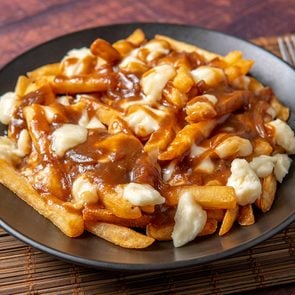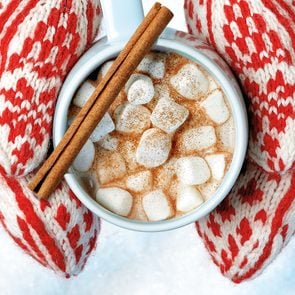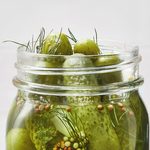The Ooey, Gooey Story of Cheese Fondue
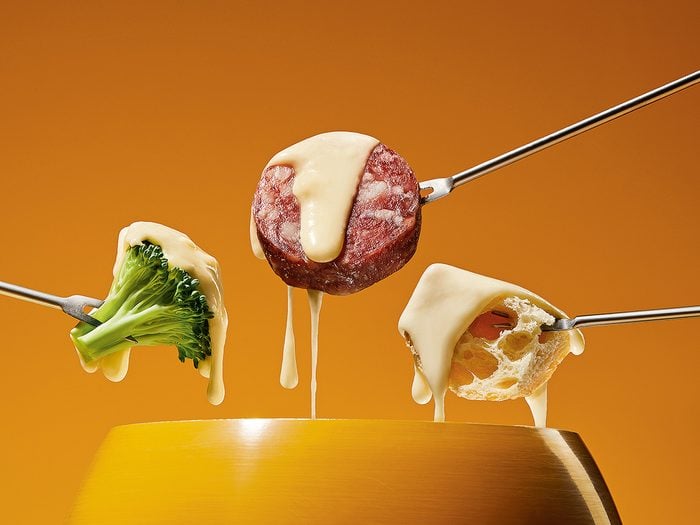
Picture this: Huddled with a group of friends and family members, you gather around a warm, bubbling pot of cheese fondue. You dip a chunk of crusty bread into the creamy mixture, swirling your fork to prepare your morsel to be devoured. Is your mouth watering yet?
Fondue comes from the French word fondre, meaning “to melt.” Cheese fondue is made with melted Gruyère, a firm, nutty cow’s-milk cheese with a pungent aroma that originates in a medieval town of the same name.
The cheese melts by simmering in a pot with garlic and dry white wine, for a hearty flavour. A traditional fondue might also use a half-and-half mix of Gruyère and another cheese, like Vacherin Fribourgeois, Appenzeller or raclette. Bread is traditional for dipping, but veggies like baby potatoes and broccoli, steak bites and pear slices are also common.
The dish is traditionally eaten “family-style” out of an earthenware pot called a caquelon. (Modern stainless-steel, cast-iron or ceramic versions are also available.) The pots tend to be wide and shallow to evenly distribute heat.
Where does cheese fondue come from?
The earliest written recipe for the dish appears in a cookbook published in 1699 in Zurich, Switzerland. But at that time, “fondue” referred to a different dish, similar to a cheesy egg soufflé. It wasn’t until the late 19th century that the fondue we know and love emerged.
Today, cheese fondue is the ultimate Swiss dish. But until the 1930s, it was only found in parts of Switzerland. According to Dominik Flammer, author of Swiss Cheese: Origins, Traditional Cheese Varieties and New Creations, it was the efforts of a cheese cartel that brought fondue to broader popularity. A postwar export slump led producers to form the Swiss Cheese Union, which limited competition and campaigned globally for Swiss cheeses. Of thousands of cheeses, the cartel supported a mere seven. You guessed it: Gruyère was one of them.
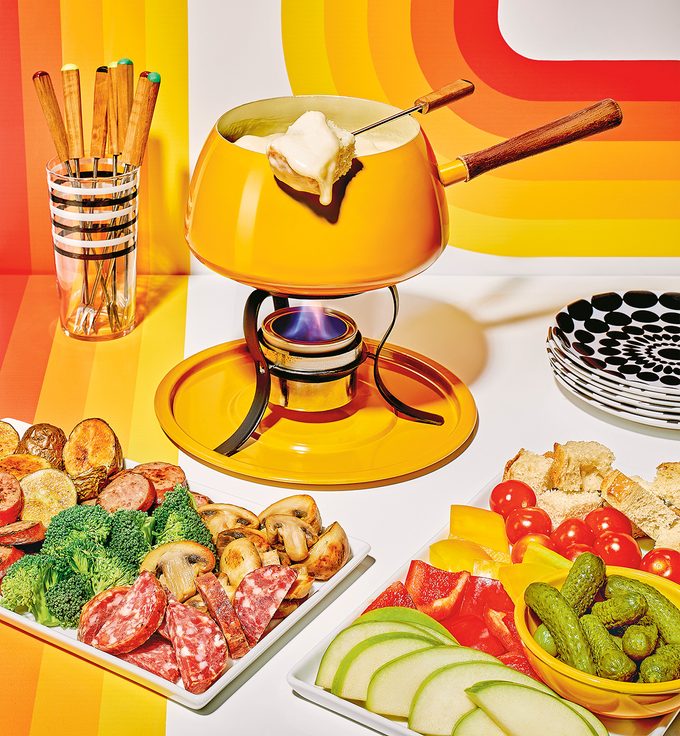
The union was disbanded in the late ’90s. But by then, cheese fondue’s reputation as the country’s national dish had long been established. It also became a popular wintertime treat in North America: By the early 1970s, fondue was all the rage among young baby boomers.
How to eat fondue like a pro
So whether you find yourself in the Swiss Alps or you want to make your at-home experience feel authentic, here are some do’s and don’ts:
1. Don’t double dip.
2. Stir clockwise or in a figure-eight pattern, never counter-clockwise. Swiss superstition tells us it’s the only way to keep the cheese from curdling.
3. Don’t scrape or tap on the pot; it’s bad manners. Swirl your fork to catch flyaway strings of cheese.
4. The Swiss believe you shouldn’t drink anything other than white wine, kirsch (cherry brandy) or tea alongside fondue because anything else will cause the cheese to congeal in the stomach into a fatty ball known as a “cheese baby.” (A small study in 2010 found that black tea did aid in the digestion of cheese fondue, but alcohol slowed down digestion considerably.)
5. Never lose your chunk in the pot. In Switzerland, whoever commits this faux pas will be half-jokingly handed a punishment such as buying a round of drinks, doing the dishes or taking a shot of kirsch.
Toss your cheese of choice, wine and garlic into a pot and you’ll be well on your way to throwing the fondue dinner party of your dreams.
For more fascinating food stories, dive into this dill-icious history of pickles.

